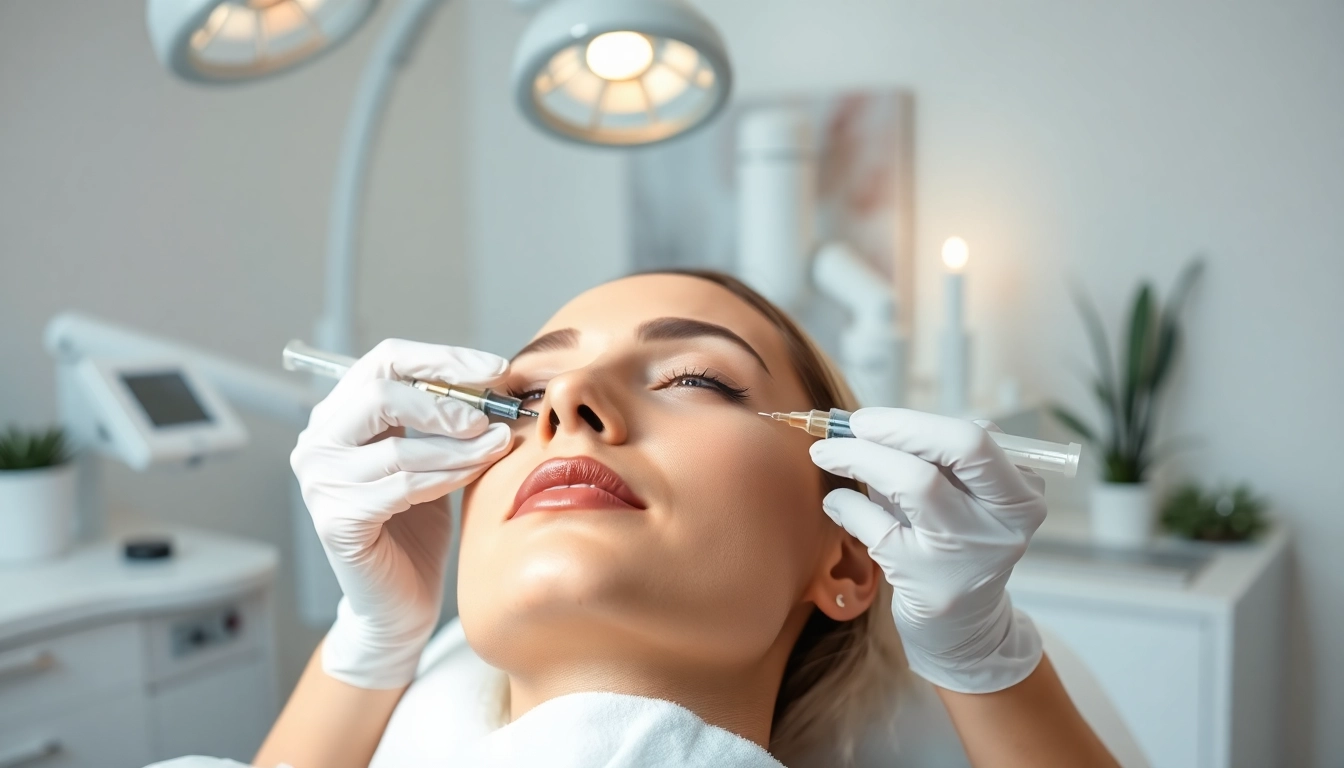Understanding Filler & Botox: Key Differences
What is Filler & Botox?
Filler & botox are two popular cosmetic treatments that enhance facial aesthetics by addressing signs of aging and facial asymmetry. Filler & botox serve different purposes and are used in distinct ways. Fillers are gel-like substances injected into the skin to restore lost volume, smooth out wrinkles, and enhance facial contours. They are most commonly made of hyaluronic acid, although other materials exist. In contrast, botox is a neurotoxin that temporarily paralyzes the muscles responsible for creating dynamic wrinkles, primarily around the eyes and forehead.
How Filler & Botox Work on the Skin
The mechanisms by which filler & botox operate are different but complementary. Fillers work by physically filling in and adding volume to areas of the face. For instance, they can plump up the lips, enhance cheekbones, and soften nasolabial folds. The results are immediate, and depending on the type of filler used, effects can last from several months to over a year.
On the other hand, botox works by inhibiting communication between nerves and muscles. The treatment targets specific muscles, causing them to relax and reducing the appearance of wrinkles caused by muscle contractions. Results from botox are typically visible within a few days and can last anywhere from three to six months. Understanding these differences is crucial for anyone considering these treatments, as it helps in making informed decisions tailored to individual aesthetic goals.
Common Areas for Treatment with Filler & Botox
Both filler & botox can be applied to various areas of the face, but their applications differ. Fillers are often used in the following areas:
- Lips: To enhance fullness and definition.
- Cheeks: To restore volume and lift sagging skin.
- Nasolabial Folds: To smooth out wrinkles that run from the nose to the corners of the mouth.
In contrast, botox treatments are commonly administered in these regions:
- Forehead Lines: To reduce horizontal wrinkles.
- Crow’s Feet: To smooth out fine lines around the eyes.
- Frown Lines: To alleviate the appearance of glabellar lines between the eyebrows.
Benefits of Using Filler & Botox
Immediate Aesthetic Improvements
One of the most compelling reasons people opt for filler & botox is the immediate improvement in appearance. For fillers, results are almost instant, with many patients observing enhanced volume and smoother skin right after the procedure. In the case of botox, while some results may take a few days to become fully apparent, the visible reduction in wrinkles significantly boosts individual confidence.
Long-Lasting Results
Depending on the type of filler used, results can last anywhere from six months to two years. The longevity of botox effects typically ranges from three to six months. This means that both filler & botox treatments provide a viable option for those looking for semi-permanent solutions to maintain their youthful appearance without extensive surgical procedures.
Boosting Self-Confidence with Filler & Botox
Beyond the physical improvements, the psychological benefits of filler & botox should not be overlooked. Many individuals report feeling more confident and satisfied with their appearance after treatments. This boost in self-esteem can positively impact personal and professional relationships, leading to enhanced overall quality of life. The combination of self-care and aesthetic enhancements fosters a positive self-image that many find transformative.
Choosing the Right Practitioner for Filler & Botox
Qualifications and Experience to Look For
Choosing a qualified practitioner for filler & botox is crucial for achieving optimal results and ensuring safety. Look for practitioners with advanced training in aesthetic medicine, preferably those who specialize in injectables. Certifications from recognized organizations and a portfolio of before-and-after photos of previous patients showcase their proficiency. Additionally, ensure that the practitioner has experience handling various skin types and aesthetic concerns.
Questions to Ask During Your Consultation
Before undergoing treatments, it’s essential to have an open dialogue during your initial consultation. Some vital questions to ask include:
- “What type of filler or botox do you recommend, and why?”
- “What can I expect during and after the procedure?”
- “What are the potential side effects?”
- “How often will I need follow-up treatments?”
Receiving clear and informative responses will help ease any concerns you may have and establish trust between you and the practitioner.
Understanding Safety and Risks
While filler & botox treatments are generally safe when performed by qualified professionals, it’s essential to be aware of potential risks. Common side effects can include bruising, swelling, and temporary pain at the injection site. Serious complications, though rare, such as allergic reactions or vision problems should be discussed with your practitioner. A well-informed decision is paramount to ensuring a positive experience and outcome.
Aftercare and Maintenance for Filler & Botox
What to Expect Post-Treatment
After receiving filler & botox, post-treatment care plays a significant role in ensuring the best results. Following the procedure, patients may experience mild discomfort, swelling, or bruising. It’s advisable to avoid direct sunlight and excessive heat for the first 24 hours. Keeping the head elevated while sleeping and refraining from heavy exercise for a few days will also aid recovery.
Best Practices for Longevity
To maximize the effectiveness of filler & botox, adhere to several best practices:
- Maintain a consistent skincare routine that includes sunblock to protect against UV damage.
- Stay hydrated to promote healthy skin.
- Avoid excessive alcohol consumption and smoking, as these habits can accelerate aging.
Regular follow-up appointments with your practitioner can help monitor results and provide touch-ups when necessary.
Signs of Complications to Watch For
Monitor your condition after treatments and remain vigilant for any unusual symptoms. Signs of complications may include intense pain, signs of infection, or persistent swelling. If you experience unusual side effects or concerns, reach out to your practitioner immediately. Early intervention is necessary to address potential complications and ensure your safety.
Trends and Innovations in Filler & Botox Treatments
Emerging Techniques and Products
As the field of cosmetic enhancement continues to evolve, various emerging techniques and products are gaining popularity. Innovations in filler formulations, such as longer-lasting and more natural-looking options, allow practitioners to tailor treatments more effectively. Additionally, techniques like microcannula injection, which reduces bruising and discomfort, are reshaping how these treatments are administered.
Personalization of Filler & Botox Treatments
Personalization is a significant trend in aesthetic medicine, making treatments more effective. Practitioners increasingly use facial mapping techniques and comprehensive assessments to customize treatment plans according to individual facial anatomy and aesthetic goals. This approach leads to results that are not only more natural-looking but also harmonious with the patient’s overall face.
Future Directions in Aesthetic Medicine
The future of filler & botox treatments is exciting, with ongoing research and advancements promising even more effective and safer procedures. Innovations on the horizon may include bioregulators that promote skin regeneration or improved methods of injectable delivery. As technology continues to advance, the landscape of aesthetic medicine will likely undergo transformation, offering patients even more ways to enhance their beauty safely and effectively.



